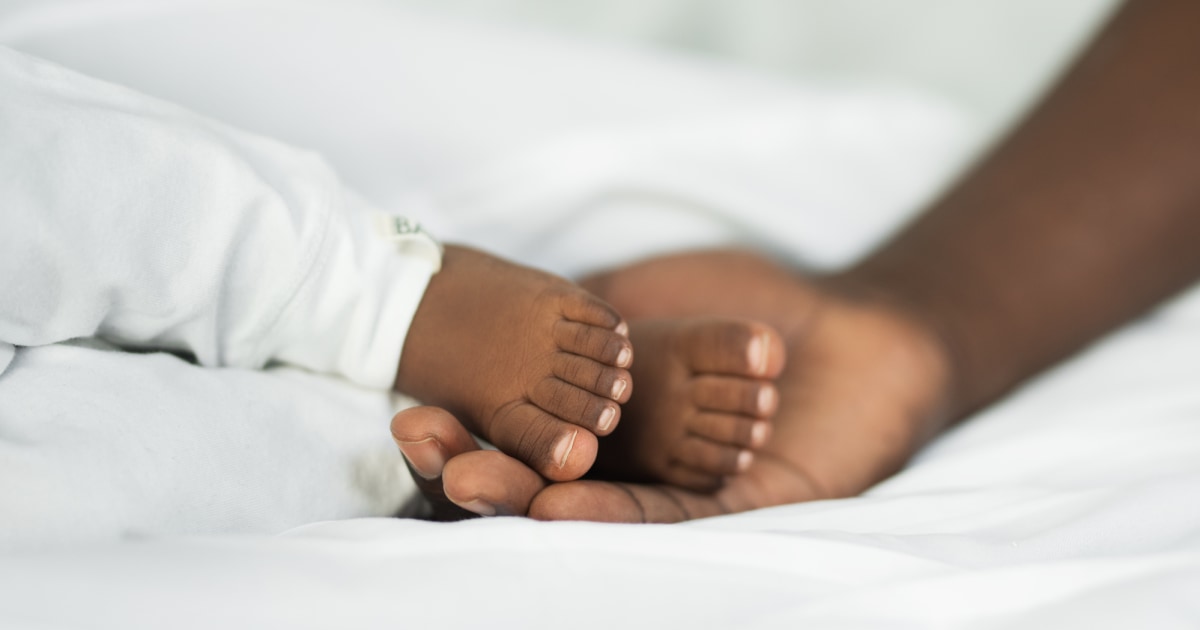By Erika Edwards -
NBC News
Despite a record infant mortality rate in 2020, a new study finds an unexpected jump in unexplained black infant deaths in the first year of the coronavirus pandemic.
The rate of SIDS, or sudden infant death syndrome, increased 15% in a single year, from 33.3 deaths per 100,000 babies born in 2019 to 38.2 such deaths in 2020, according to research from the Centers for the Control and Prevention of Diseases (CDC, for its acronym in English) published this Monday in the medical journal Pediatrics.
[The opioid crisis is not just a white problem: deaths among Hispanics have skyrocketed]
SIDS is a well-known term, and is used in cases where the cause of death cannot be definitively explained.
It is not used when a child is found to have accidentally suffocated on a pillow cushion, for example.
In the data collection, both SIDS and incidents of accidental suffocation or strangulation are encompassed under the term SUID, or sudden unexplained infant death.
SIDS data is not broken down by race and ethnicity, but SUID data is.
That's where the researchers discovered the rise in unexplained deaths in black babies, but not in any other racial or ethnic group.
Experts warn about the risks of insomnia for heart health
March 6, 202302:04
The finding "completely surprised us," said study author Sharyn Parks Brown, chief epidemiologist with CDC's Perinatal and Child Health Team.
The racial and ethnic breakdown of these types of deaths had been consistent for decades.
The reasons for the increase are unknown.
It could be a statistical anomaly - an inexplicable flicker in the data - that would have to be watched for several more years to see if the increase is sustained.
[CDC recommends that adults get at least one test for hepatitis B]
It could also reflect adjustments the National Association of Medical Examiners made in 2019 to the way sudden infant deaths are classified on death certificates.
The guidance said that finding babies on or near soft bedding was not enough to qualify such deaths as accidental suffocation without evidence that the children's airways had, in fact, been blocked.
Those cases, according to the recommendations, should be classified as SIDS.
“If the new guidance had been followed, SIDS reporting could have increased,” the study authors wrote.
The CDC warns about a dangerous bacterium that affects newborns
March 9, 202301:37
Whatever the reason, it is clear that complex racial disparities persist.
The black population was disproportionately affected by the pandemic, both from the disease and from the economic stress that accompanied it.
According to an editorial published alongside the study, blacks are more than twice as likely as whites to live in poverty.
“And among families with children, homelessness is 50% more likely among those who identify as non-Hispanic black,” the authors wrote.
[Do you know how oxygen therapy works? An expert explains it]
A co-author of the editorial, Dr. Rebecca Carlin, a pediatrician affiliated with Columbia University in New York, said: "If you don't have a safe place for your baby to sleep, how are you going to make them sleep safe?"
In addition, black communities have higher rates of smoking and premature birth.
Both are risk factors for sudden infant death.
Safe Sleep Practices
Parks Brown and his team published a study in 2021 that concluded that unsafe bedding is one of the leading causes of unexpected death in babies 4 months and younger.
For this age group, soft items such as blankets, pillows, crib bumpers and stuffed animals should not be placed in cribs when babies sleep or are left unattended, according to the American Academy of Pediatrics (AAP).
Children this age do not have the strength or motor skills to move away from choking hazards.
[Do you have a migraine? These are the foods they recommend avoiding and the ones you can eat]
According to AAP guidelines, very young infants should sleep on their backs until they are one year old.
They should sleep alone in bed, on firm, flat surfaces, and with fitted sheets.
Sofas and armchairs expose babies to a very high risk of suffocation, since they can become trapped between the seat cushions or under sleeping adults.
Experts also advise keeping baby cribs in caregivers' rooms for at least six months.
Other ways to reduce the risk of sudden infant death, from the AAP:
Breastfeeding, when possible, has been shown to reduce the risk of sudden infant death.
The AAP also cites evidence that pacifiers administered during naps and at bedtime may be beneficial.
Weighted blankets or pajamas should not be used on or near sleeping babies.
Make sure that baby cribs have not been recalled due to safety risks.
Help babies build the muscles they will one day use to roll over and move away from potential danger with supervised “tummy time.”
This practice can begin, according to the AAP, soon after babies are allowed to go home from the hospital.







